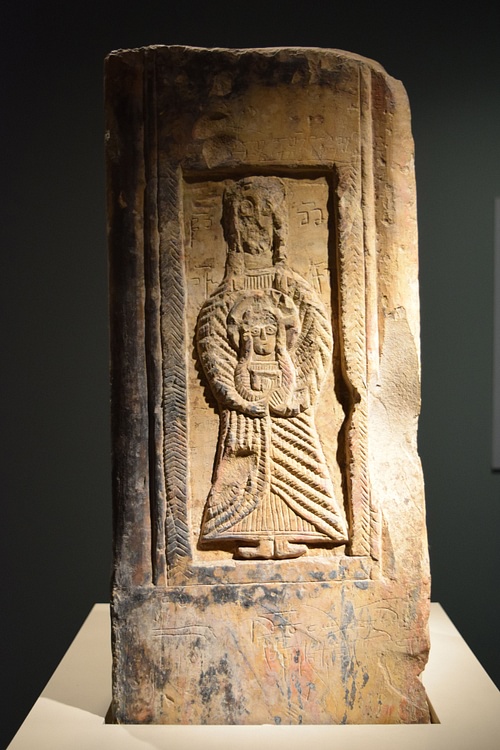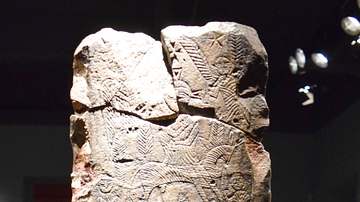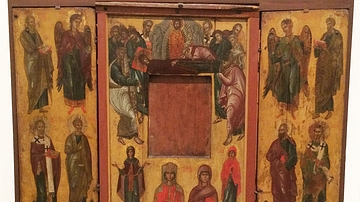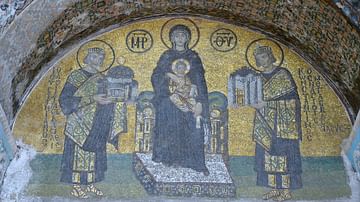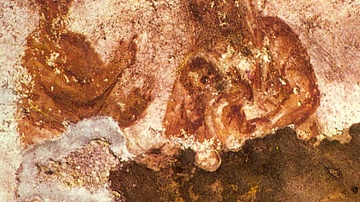Illustration
This fragment was rediscovered in Davati village, located in eastern Georgia, in 1980. It was originally made in the 6th century CE from limestone. The standing figure of the Virgin Mary represents a unique iconographic type of the Virgin, coming from the oldest "Hodigitria-type." Next to the figures of the Virgin and baby Jesus are "condensed" inscriptions; "St. Mary" and "Jesus Christ." Steles or stone crosses ("kvajvari" in Georgian) are cult monuments carved from stone that were typical for the early Christian period in Georgia (c. 300-750 CE). Many of these steles have survived because they were reused as construction material for churches erected in the Middle Ages and Early Modern era. (Georgian National Museum, Tbilisi)
About the Author
Cite This Work
APA Style
Wiener, J. B. (2017, October 03). Fragment of a Stele of the Virgin Mary from Georgia. World History Encyclopedia. Retrieved from https://www.worldhistory.org/image/7363/fragment-of-a-stele-of-the-virgin-mary-from-georgi/
Chicago Style
Wiener, James Blake. "Fragment of a Stele of the Virgin Mary from Georgia." World History Encyclopedia. Last modified October 03, 2017. https://www.worldhistory.org/image/7363/fragment-of-a-stele-of-the-virgin-mary-from-georgi/.
MLA Style
Wiener, James Blake. "Fragment of a Stele of the Virgin Mary from Georgia." World History Encyclopedia. World History Encyclopedia, 03 Oct 2017, https://www.worldhistory.org/image/7363/fragment-of-a-stele-of-the-virgin-mary-from-georgi/. Web. 03 Jul 2025.

